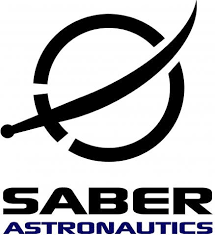The next business frontier, in terms of physical spaces, is not one you can physically walk on. I’m talking about outer space, and I’m talking about it today with my friend, Jason Held, CEO of Saber Astronautics. I got to know Jason a few years back by chance, and immediately was captivated by his story, his passion, and his ground-breaking work in the space industry. Based in Boulder, Colorado, and in Sydney, Australia, Jason and his team are creating access to new areas of the space industry through better game-like user interfaces. Navigating business ‘friendly-enemy’ relationships in the industry and operating in the complex world of business to government relationships is no small feat, but Jason saw an opportunity as a new graduate and couldn’t say no.
“Business to government, if you know how to play that game, is really lucrative. Fast forward, I did my Ph.D. in Australia, this was about 2007 when I was graduating, and there was a new category of satellites called CubeSats. If you think about the size of a spacecraft back then for an industry-level mission and things that are doing satellite communications or, or earth observation, things that produce large amounts of money, these historically are half a billion-dollar spacecraft, massive infrastructure required to do something like that. Well, the new category was what had just been embedded between 2005/2007 and they were the size of a toaster. The cost for starting your space company was less than half the cost of a juice bar range.”
Lowering that financial barrier to entering the space industry was all it took for Jason to dive in. In this episode, he walks us through his process of disrupting the space industry by creating Saber Astronautics. He talks about the complexities of their business model working with both governments, and businesses. Jason shares about how their innovative PIGI software was created, and the rise of downstream space industry service companies and micro-industries like this. He’s predicting cool things for the future in space – all this up next on Marketing Trends.
Main Takeaways:
- Business to Government Model: It’s not one talk about a lot on this show but it creates some fun challenges in every aspect of the business. Biggest words of wisdom are, be ready to fight. The contracts are lucrative which means there’s some fierce competition for them. When you get into government contract work, know that the voices of doubt won’t just be coming from inside of your head; the government contracting industry is cut-throat.
- Space Traffic Regulation Is Coming: The amount of space debris, and operating satellites spinning constantly over our heads is increasing every day, and therefore so is the need for regulation and safety policies. Who should set these, what exactly they should be, and how they would be enforced are all up for debate in the community at this point, as companies and governments alike race to capitalize on the next ‘gold-rush’ of business opportunity.
- Space For All: What Space Democratization Means: For the space industry, and for business, the creation of CubeSats removed a massively prohibitive cost barrier to both businesses operating in the industry and students learning how to work in it. Companies like Jason’s could raise a normal business-sized amount of capital to start building out software, which they have done.
Key Quotes:
“It was a fistfight. We competed against companies that were 20 to 100 times our size, two of the largest defense contractors in Australia were our primary competitors, and they led up to, everybody said we couldn’t do it. I was getting calls at two in the morning from our competitors saying, ‘what are you doing? You’re never gonna make it.’ And we persevered and we made it there.
“We have a very strong product and very strong brand in that part of the world and everybody recognized that. We were told by the companies we were talking to that we had to prove that we were good enough and that’s how the conversation went. So there wasn’t a lot of incentive for partnering in that case. The other part was we started getting a lot of calls from people asking us if we were bidding. The volume got high enough and we said, let’s go for it.”
“Business to government, if you know how to play that game, is really lucrative. Fast forward, I did my Ph.D. in Australia, this was about 2007 when I was graduating, and there was a new category of satellites called CubeSats. If you think about the size of a spacecraft back then for an industry-level mission and things that are doing satellite communications or, or earth observation, things that produce large amounts of money, these historically are half a billion-dollar spacecraft, massive infrastructure required to do something like that. Well, the new category was what had just been embedded between 2005/2007 and they were the size of a toaster. The cost for starting your space company was less than half the cost of a juice bar range.
“Historically space tools are bespoke. It’s like the matrix. You’ve got a whole bunch of words on a screen and operators trying to figure out what is going on. ‘We said, why don’t you turn that into a video game?’ It’s easy to use this human interface, this user interface, modern UI UX design, and reduce the barrier to entry to actually make space as easy as flying a car is our goal. So normally, like you need a Ph.D. or a Masters 15 years experience to get trusted with, with the satellite. We’ve got undergraduate interns, 20-21 years old, and first time we sit down, have a go.”
“There is no space traffic solution globally. The U.S. military has been running it for most of the Western world, but they want to be space warriors, not space traffic cops. So much more material is coming out there. We’ve got 7,500 satellites that are active in space today and I think that’s going to grow to 40,000 by the end of the decade. Some people are predicting a hundred thousand satellites and for every satellite, you’ve got 10 times more in pieces of debris floating around and it’s all traveling at eight kilometers a second. If you get hit by one of those, that’ll ruin your day. We do a lot of work in that field.”
“We need someone to do it [patrol space traffic.] It can’t be military; can’t be a single government; it has to be a consortium of governments. I think it should be a public-private partnership because right now a lot of companies like Saber are competing for tools to be a part of that next gold rush. It’s a hard thing to justify because it’s related to the safety of flight.”
“PIGI is our mission control software. We use it for entry-level design. With it, you’re able to design all of your orbits and plan any orbit from it, pretty much any planet in the solar system, and use the outputs of that to plan your business. Students use it for their student projects but we really made this useful for entrepreneurs, people who want to start their own space businesses someday. They use it to calculate the addressable market for their mission plan.”
Bio:
Jason is a space engineer with 20 years of experience in spacecraft, operations, mission control, and team leadership. Space is a personal passion of his. He founded Saber Astronautics as the mechanism to contribute to this industry. For the last 10 years, this has been a practical application of machine learning and 3d graphics making space easy to control and to solve operational problems such as flight diagnostics, swarm control, space weather, orbital dynamics, etc. Saber now sells to the US Air Force, Australian Air Force, and a growing range of commercial satellite owners.
Before founding Saber Astronautics, he was a US Army Major for USSTRATCOM (Space Command) and deployed internationally during wartime. He taught at the Interservice Space Fundamentals Course and served as an active duty engineer at Army Space and Missile Command Battle Lab. Military service also includes 5 years in the field of artillery deployed to a range of hazardous duty locations. As a civilian, he wrote flight software for the Hubble Space Telescope (Wide Field Camera 3) and testing for the International Space Station.
As an academic, he lectured for the IRS Space Station Design Workshop, University of New South Wales, and International Space University. He led a research expedition in the high Canadian Arctic and is actively growing the “NewSpace” community co-founding teams such as the Delta-V SpaceHub Accelerator and the University of Sydney space engineering laboratory.
He served on the Australian Government “Expert Reference Group” designing their Space Agency and is also active with international think tanks Global Access Partners, NSI, and the Economist, and I’ll occasionally provide expertise to Australian News programs. Both through active teaching and through Saber’s internship program brought over 250 people into the industry.
—
Marketing Trends podcast is brought to you by Salesforce. Discover marketing built on the world’s number one CRM: Salesforce. Put your customer at the center of every interaction. Automate engagement with each customer. And build your marketing strategy around the entire customer journey. Salesforce. We bring marketing and engagement together. Learn more at salesforce.com/marketing.




